
St. Albans is a residential neighborhood in the southeastern portion of the New York City borough of Queens. It is bordered by Jamaica to the northwest, Hollis to the north, Queens Village to the northeast, Cambria Heights to the east, Laurelton to the southeast, Springfield Gardens to the south, and South Jamaica to the southwest. St. Albans is centered on the intersection of Linden Boulevard and Farmers Boulevard, about two miles north of John F. Kennedy International Airport.

Jamaica is a neighborhood in the New York City borough of Queens. It has a popular large commercial and retail area, though part of the neighborhood is also residential. Jamaica is bordered by Hollis, St Albans, and Cambria Heights to the east; South Jamaica, Rochdale Village, John F. Kennedy International Airport, and Springfield Gardens to the south; Laurelton and Rosedale to the southeast; Richmond Hill, South Ozone Park, and Aqueduct Racetrack to the west and southwest; Briarwood to the northwest; and Kew Gardens Hills, Jamaica Hills, and Jamaica Estates to the north.

Hollis is a residential middle-class neighborhood within the southeastern section of the New York City borough of Queens. While a predominantly African-American community, there are small minorities of Hispanics and South Asians residing in the area. Boundaries are considered to be 181st Street to the west, Hillside Avenue to the north, Francis Lewis Boulevard to the east, and Murdock Avenue to the south. Hollis is located between Jamaica to the west and Queens Village to the east.
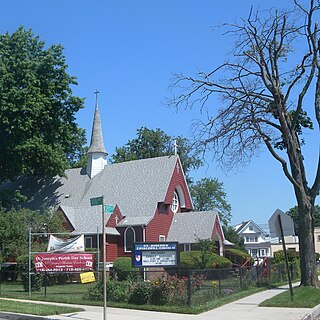
Queens Village is a mostly residential middle class neighborhood in the eastern part of the New York City borough of Queens. It is bound by Hollis to the west, Cambria Heights to the south, Bellerose, Queens and Elmont, Nassau County to the east, and Oakland Gardens to the north.
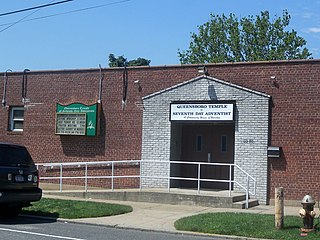
South Jamaica is a residential neighborhood in the borough of Queens in New York City, located south of downtown Jamaica. Although a proper border has not been established, the neighborhood is a subsection of greater Jamaica bounded by the Long Island Rail Road Main Line tracks, Jamaica Avenue, or Liberty Avenue to the north; the Van Wyck Expressway on the west; Rockaway Boulevard on the south; and Merrick Boulevard on the east, adjoining the neighboring community of St. Albans. Other primary thoroughfares of South Jamaica include Baisley, Foch, Linden, Guy R. Brewer, and Sutphin Boulevards. The 180th Street Business Improvement District is responsible for the development of the area.

Richmond Hill is a commercial and residential neighborhood located in the southeastern section of the New York City borough of Queens. The area borders Kew Gardens and Forest Park to the north, Jamaica and South Jamaica to the east, South Ozone Park to the south, and Woodhaven and Ozone Park to the west. The neighborhood is split between Queens Community Board 9 and 10.
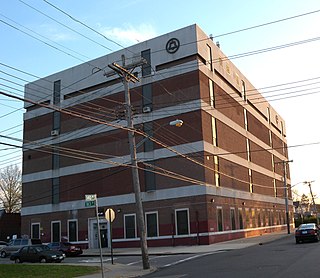
Springfield Gardens is a neighborhood in the southeastern area of the New York City borough of Queens, bounded to the north by St. Albans, to the east by Laurelton and Rosedale, to the south by John F. Kennedy International Airport, and to the west by Farmers Boulevard. The neighborhood is served by Queens Community Board 12. The area, particularly east of Springfield Boulevard, is sometimes also referred to as Brookville.

Jamaica High School was a four-year public high school in Jamaica, Queens, New York. It was operated by the New York City Department of Education.

Jamaica Estates is a neighborhood in the New York City borough of Queens. Jamaica Estates is part of Queens Community District 8 and located in the northern portion of Jamaica. It is bounded by Union Turnpike to the north, Hillside Avenue to the south, Utopia Parkway and Homelawn Street to the west, and 188th Street to the east. The main road through the neighborhood is Midland Parkway.

Francis Lewis Boulevard is a boulevard in the New York City borough of Queens. The roadway is named for Francis Lewis, a Queens resident who was a signer of the United States Declaration of Independence. The boulevard zigzags across Queens by including segments of several other roadways that were renamed to become parts of the boulevard.
The North Shore Bus Company operated public buses in Queens, New York City. It was established in 1920 as the successor to the New York and North Shore Traction Company trolley system, and operated until 1947 when it went bankrupt, and its operations were taken over by the New York City Board of Transportation.

Jamaica Avenue is a major avenue in the New York City boroughs of Brooklyn and Queens, New York, in the United States. Jamaica Avenue's western end is at Fulton Street and Broadway, as a continuation of East New York Avenue, in Brooklyn's East New York neighborhood. Physically, East New York Avenue connects westbound to New York Avenue, where East New York Avenue changes names another time to Lincoln Road; Lincoln Road continues to Ocean Avenue in the west, where it ends. Its eastern end is at the city line in Bellerose, Queens, where it merges into NY 25 to serve the rest of Long Island.
The Queens Community Board 8 is a local government in the New York City borough of Queens, encompassing the neighborhoods of Briarwood, Cunningham Heights, Flushing South, Fresh Meadows, Hillcrest, Hilltop Village, Holliswood, Jamaica Estates, Jamaica Hills, Kew Gardens Hills, Pomonok, and Utopia. It is delimited by the Long Island Expressway to Hillside Avenue and from the Van Wyck Expressway to the Clearview Expressway.
The Queens Community Board 12 is a local government in the New York City borough of Queens, encompassing the neighborhoods of Jamaica, Hollis, St. Albans, Springfield Gardens, Baisley Park, Rochdale Village, South Jamaica. Queens Community Board 12 is the second largest Community Board in Queens, covering the largest area of the borough. Comprising districts 28, 29 and part of 27, Queens Community Board 12’s northern boundary is Hillside Avenue; eastern boundaries are Francis Lewis Boulevard and Springfield Boulevard ; southern boundary is the Belt Parkway and western boundary is the Van Wyck Expressway. Downtown Jamaica serves as one of New York City’s major regional retail, employment and transportation hubs; is home to educational, theatre/arts, governmental and civic facilities, including the U.S. Food and Drug Administration Regional Laboratory, Social Security Administration offices, Queens Family, Queens Civil Court, and Supreme Courts, York College, City University of New York, Jamaica Center for Arts and Learning and The Jamaica Performing Arts Center.
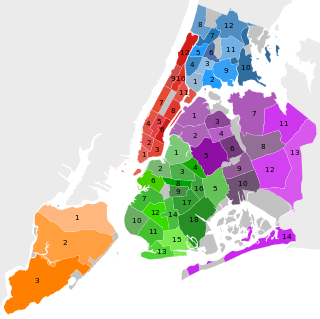
Community boards of Queens are New York City community boards in the borough of Queens, which are the appointed advisory groups of the community districts that advise on land use and zoning, participate in the city budget process, and address service delivery in their district.
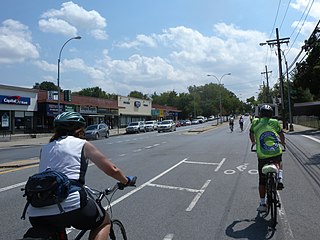
Utopia Parkway is a major street in the New York City borough of Queens. Starting in the neighborhood of Beechhurst and ending in the Jamaica Estates neighborhood, the street connects Cross Island Parkway and Northern Boulevard in the north to Union Turnpike, Grand Central Parkway and Hillside Avenue in the south.
Foothill Malls is a series of eight traffic medians straddling 193rd Street between Foothill Avenue and Jamaica Avenue in the Hollis neighborhood of Queens, New York City.
Richmond Hill Historic District is a national historic district in Richmond Hill, Queens, New York. It is bounded to the north by Park Lane South, to the east by 118th Street, to the south by Myrtle Avenue. The district includes 200 contributing buildings built between 1890 and 1915 next to the former South Side Railroad line and the Richmond Hill station at Hillside Avenue, shaped roughly like a triangle. They consist mainly of architectural styles dating back to an earlier time of Academic Eclecticism in home building and were constructed for railroad commuters. Most of the contributing properties were planned as suburbs to Brooklyn and Manhattan. It also included smaller houses built between 1917 and 1930 at the beginning of the Great Depression.


















